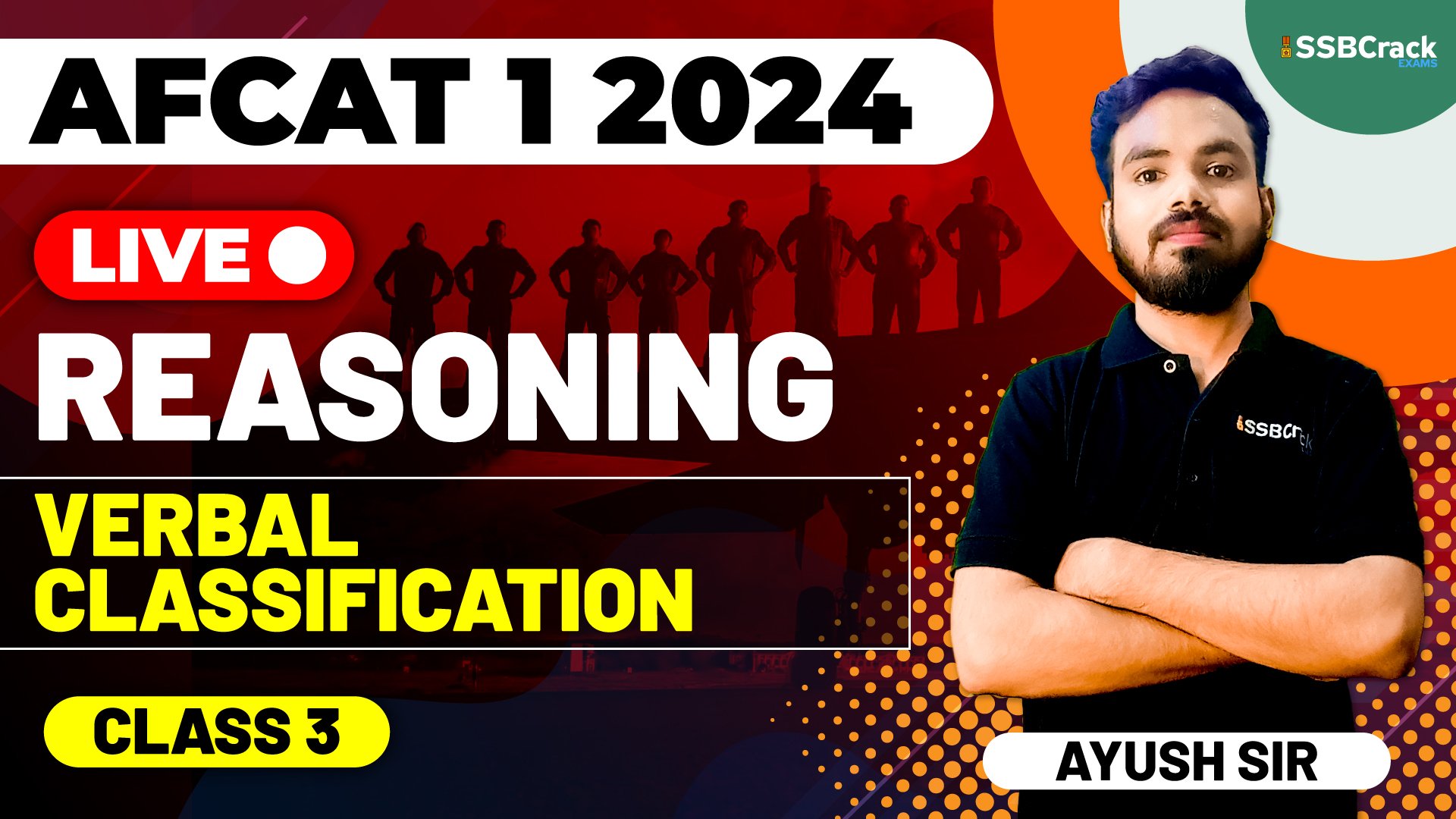In the pursuit of a career in the Indian Air Force and other branches of the Indian Armed Forces, the AFCAT (Air Force Common Admission Test) and CDS (Combined Defence Services) exams stand as crucial gateways. The Reasoning section of these exams holds particular significance, and within this section, Verbal Classifications is a key aspect. In this article, we will delve into the intricacies of verbal classification, exploring its definition, types, and the application of tricks to solve questions effectively. Covering number classification, word classification, and letter classification, this guide aims to equip aspirants with the knowledge and strategies needed to tackle verbal classifications in the AFCAT-CDS 1 2024 Exam.
Understanding Verbal Classification
Verbal classification is a cognitive process that involves categorizing words, numbers, or letters into groups based on shared characteristics or patterns. In the context of competitive exams like AFCAT and CDS, mastering verbal classification is crucial as it tests a candidate’s ability to identify relationships and patterns within a set of items and group them based on common features.
Definition of Verbal Classification
Verbal classification, also known as word classification, is a logical process that requires organizing a group of words or terms into different categories based on a shared attribute or feature. This process assesses the candidate’s ability to discern relationships and patterns within a set of items and group them based on a shared characteristic.
Types of Verbal Classification
Verbal classification questions come in various forms, each demanding a unique approach. Let’s explore the primary types of verbal classification questions:
1. Number Classification
Number classification involves categorizing a set of numbers into different groups based on a shared mathematical rule or pattern. Candidates must identify the specific relationship or feature that unites the numbers within each group. Let’s examine a number classification example:
- Example: 16, 25, 49, 64, 121
Here, the numbers can be classified into two groups: perfect squares (16, 49, 64, 121) and non-perfect squares (25). The common attribute within each group is whether the number is a perfect square or not.
2. Word Classification
Word classification deals with grouping a set of words into categories based on shared linguistic characteristics or meanings. Candidates must identify the common feature that links the words within each group. Here’s an example of word classification:
- Example: Apple, Banana, Orange, Carrot, Potato
In this case, the words can be divided into two groups: fruits (Apple, Banana, Orange) and vegetables (Carrot, Potato). The common attribute that unites the words is the type of food they represent.
3. Letter Classification
Letter classification involves categorizing a set of letters into groups based on shared patterns or relationships within the alphabet. Candidates need to identify the specific characteristic that unites the letters in each group. Let’s explore an example of letter classification:
- Example: B, G, M, P, T
In this case, the letters can be divided into two groups: the second letter of the word (G, M, P, T) and the first letter of the word (B). The common attribute is the position of the letter within the word.
Tricks for Verbal Classification
Verbal classification questions can be challenging, but employing tricks and strategies can make them more manageable. Let’s explore some effective techniques:
1. Identify Common Features
The first step in solving verbal classification questions is to identify common features or patterns within the items provided. Look for relationships between numbers, similarities in words, or patterns in letters.
2. Create Mental Categories
Once common features are identified, mentally create categories based on these features. Group items that share the same characteristics into distinct mental categories. This helps in organizing thoughts and simplifying the classification process.
3. Use Mnemonics
Mnemonics can aid in remembering and organizing information. Create simple memory aids or acronyms to group items in your mind. Mnemonics make it easier to recall specific patterns or relationships during the exam.
4. Practice Regularly
Regular practice is essential for enhancing the ability to recognize patterns and relationships quickly. Solve a variety of classification questions to improve efficiency and accuracy. Utilize practice papers and previous years’ question papers for diverse examples.
5. Time Management
Efficient time management is critical in competitive exams. Allocate a specific amount of time for each classification question to ensure that you can attempt all questions within the stipulated time.
Examples of Verbal Classification
Real-world examples help solidify the understanding of verbal classification. Let’s explore a few scenarios:
Number Classification:
- Example: 8, 27, 64, 125, 216, 343
In this example, the numbers can be classified into two groups: cubes of odd numbers (27, 125, 343) and cubes of even numbers (8, 64, 216). The common attribute is whether the cube root of the number is an odd or even number.
Word Classification:
- Example: Dog, Cat, Parrot, Chair, Sparrow
Here, the words can be divided into two groups: animals (Dog, Cat, Parrot, Sparrow) and objects (Chair). The common attribute is the type of entity represented by the word.
Letter Classification:
- Example: A, D, G, J, M
In this instance, the letters can be categorized into groups representing the first letter of the months (J, M) and the first letter of the days of the week (A, D, G). The common attribute is whether the letter represents a day of the week or a month.
Conclusion
In conclusion, verbal classification is a crucial component of the Reasoning section in the AFCAT and CDS exams. To excel in this section, it is imperative to have a thorough understanding of the different types of classification and practice regularly. Mastery of number, word, and letter classification, combined with a strong vocabulary and logical reasoning skills, will significantly enhance your chances of success. By implementing tricks and techniques and dedicating time to practice, you can confidently tackle verbal classifications in the AFCAT-CDS 1 2024 Exam. Best of luck on your journey to joining the Indian Armed Forces!



















